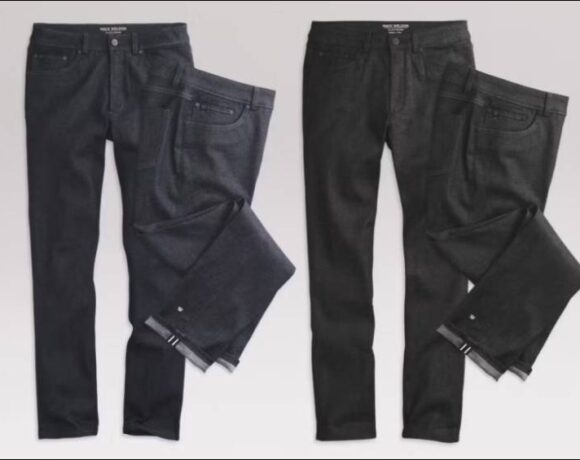Global Bedlinen Exports Decline 10.17% In 2023 Amid Rising Demand For Sustainable Bedlinen

The global bedlinen export market represents a significant segment within the textile industry, largely driven by the rising consumer demand for home textiles and interior décor. Over recent years, this market has seen a considerable shift, with an increasing preference for eco-friendly and sustainable products, fueling demand for organic and sustainable bedlinen. As consumers seek more personalized home décor solutions, the demand for high-quality and unique bedlinen has expanded, resulting in greater variety in fabric types, prints and designs. The rise of online retail and direct-to-consumer models has further enabled exporters to access a broader customer base, leading to new growth opportunities.
In 2023, global bedlinen exports amounted to US$ 12,314.42 million, representing a significant decline of 10.17% compared to the previous year. Among the different commodities within the bedlinen market, non-printed cotton bedlinen held the largest share, accounting for 33% of total exports.
Segment-Wise Bedlinen Exports
Non-Printed Bedlinen: This segment continued to dominate the global bedlinen market, with exports totaling US$ 7,773.36 million. However, it experienced a sharp decline of 25% in 2023 compared to the previous year. Currently, non-printed bedlinen holds a substantial 63% share of total global bedlinen exports.
Printed Bedlinen: Printed bedlinen, which represents 24% of the global market, also saw a decline in exports in 2023. The total exports for printed bedlinen reached US$ 2,923.20 million, registering a decline of 9.86% compared to 2022.
Knitted or Crocheted Bedlinen: This category, comprising 13% of total bedlinen exports, also faced a downturn. Exports for knitted or crocheted bedlinen amounted to US$ 1,617.86 million, reflecting a drop of 23.52% over the previous year.

Fibre-Wise Bedlinen Exports
Cotton bedlinen remains the most exported fibre type, with total exports reaching US$ 7,750.06 million in 2023. However, this segment saw a decline of 9.78%, although it still holds the largest share at 47% of the total bedlinen exports.
Man-made fibre bedlinen is the second-largest commodity by fibre type, accounting for 28% of the total market. Exports in this category grew slightly by 2.77%, totaling US$ 3,445.22 million.
Bedlinen made from other textile materials represented 12% of the total export market, with exports totaling US$ 1,524.28 million, marking a minimal increase of 0.09% in 2023.
Commodity-Wise Export Trends
Non-Printed Cotton Bedlinen
As the leading commodity in the global bedlinen market, non-printed cotton bedlinen exports amounted to US$ 4,027.44 million in 2023, a decline of 10.59% from the previous year. Pakistan emerged as the largest supplier of this commodity, surpassing China with exports totaling US$ 1,157.02 million—a growth of 3.19%, claiming 29% of the total non-printed cotton bedlinen exports.
China, now the second-largest supplier, exported US$ 1,000.68 million, a decline of 15.76%, and held 25% of the market. India, the third-largest exporter, saw its exports dropping by 33.85%, to US$ 462.90 million and representing 11% of the market.

Non-Printed Man-Made Fibre Bedlinen
Non-printed man-made fibre bedlinen is the second-largest commodity in this segment, accounting for 19% of total exports. This category experienced a growth of 1.98%, with exports totaling US$ 2,285.36 million in 2023. China continued to dominate this category, with exports reaching US$ 1,830.24 million and a market share of 80%.
Pakistan, the second-largest supplier, exported US$ 107.41 million, growing by 16.19%. El Salvador ranked third with exports totaling US$ 43.50 million, marking an impressive growth of 55.02% over the previous year.
Printed Cotton Bedlinen
Printed cotton bedlinen is the third-largest commodity by value, with exports amounting to US$ 1,699.62 million, reflecting a decline of 16.93% in 2023. China remains the largest supplier, with exports totaling US$ 465.86 million and growing by 5.15%. China holds 27% of the global market for printed cotton bedlinen. Türkiye, with exports of US$ 199.13 million, is the second-largest supplier, although its exports declined by 25.98%. Germany follows as the third-largest supplier, accounting for 10% of the market.
Knitted or Crocheted Bedlinen
Exports for knitted or crocheted bedlinen totaled US$ 1,617.86 million in 2023, marking a decline of 23.52%. Pakistan remains the largest exporter, with US$ 498.64 million and a 31% market share, despite a significant drop of 43.21%. China ranks second, with US$ 459.64 million, representing 28% share of the market, followed by Türkiye, with 7% share of the market and US$ 111.95 million in exports.
Bedlinen of Non-Printed Other Textile Materials
In 2023, global exports of non-printed bedlinen made from other textile materials totaled US$ 1,460.56 million, a drop of 7.97%, and accounted for 12% of the total bedlinen export market.
Pakistan remained the largest supplier in this category, exporting US$ 879.85 million, a decline of 8.55% compared to the previous year. Pakistan continues to hold a dominant 60% share of the global exports for non-printed bedlinen made from other textile materials.
China is the second-largest exporter in this segment, with a 24% share. Chinese exports totaled US$ 343.81 million in 2023, showing slight growth of 0.8% over the previous year.
Egypt overtook Portugal in 2023 to become the third-largest supplier, holding a 3% share. Egyptian exports amounted to US$ 38.79 million, marking a 10.33% decline from the previous year.
Printed Man-Made Fibre Bedlinen
As the sixth-largest bedlinen commodity, printed man-made fibre bedlinen saw the strongest growth in 2023, with exports totaling US$ 1.16 billion, a 4.35% increase, accounting for 9% of total bedlinen exports.
China dominated this segment, supplying 84% of global exports, with a total of US$ 971.92 million—up 6.98% from the previous year. Spain and Germany followed, each holding 2% share. Spain’s exports reached US$ 22.65 million (up 15.28%), while Germany exported US$ 22.34 million (up 6.66%).
Printed Bedlinen of Other Textile Materials
This was the least exported bedlinen commodity in 2023, though it grew by 25.50% to reach US$ 63.72 million. Poland was the largest supplier, with a 20% share and US$ 13.05 million in exports, despite a 8.40% decline. China ranked second with 18% share, exporting US$ 11.16 million, a drop of 34.55%. Portugal was third, with US$ 5.86 million in exports, down by 24.05%.
Country-Wise Bedlinen Exports

China dominates the global bedlinen export market due to its vast manufacturing capacity and cost-efficient production methods. In 2023, China’s total bedlinen exports amounted to US$ 5,083.61 million, experiencing a modest decline of 2.99% from the previous year. China holds a 41% share of total global bedlinen exports, with printed man-made fibre bedlinen representing the strongest segment within China’s export portfolio.
Pakistan remains a major player in the global bedlinen market, ranking second with exports totaling US$ 2,662.25 million, a decline of 13.58%. Pakistan accounts for 22% of global bedlinen exports, with non-printed cotton fibre bedlinen being its top-performing commodity.
India, renowned for high-quality cotton bedlinen, ranked third with exports totaling US$ 610.15 million, reflecting a sharp decline of 32.46% in 2023. India holds 5% of the global bedlinen export market, with non-printed cotton fibre bedlinen constituting 76% of its export.
(Article by Henry Dsouza, Associate Editor of Textile Insights)















